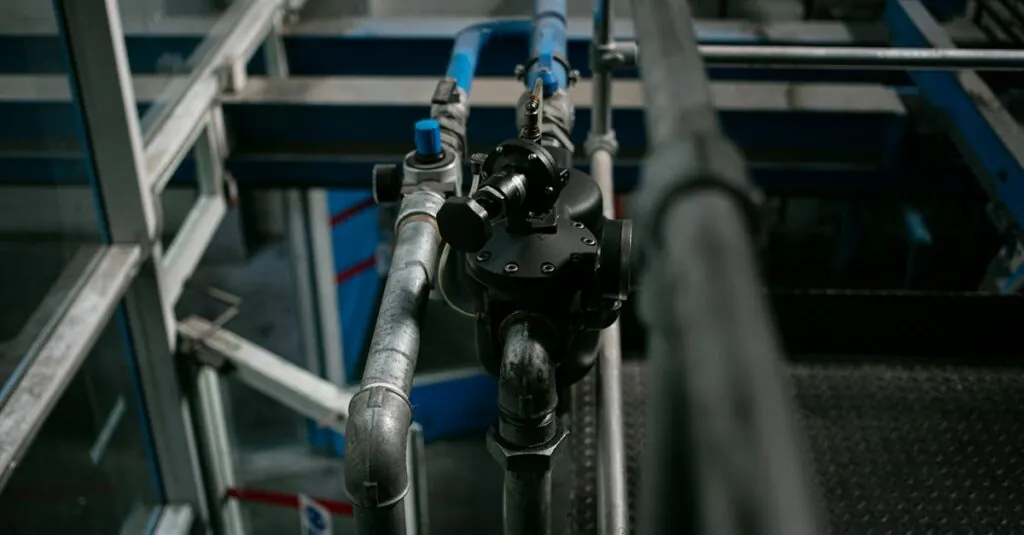Table of Contents
ToggleImagine walking into your home and having it greet you like an old friend. Lights flicker on, the thermostat adjusts to your preferred temperature, and your favorite playlist starts playing—all without lifting a finger. Sounds like magic, right? Welcome to the world of home automation systems, where convenience meets a sprinkle of futuristic charm.
Overview Of Home Automation Systems
Home automation systems integrate technology to enhance convenience and security in residential environments. These systems enable users to control various devices, such as lights, thermostats, doors, and security cameras, remotely or through automation.
Automation improves daily routines by allowing personalized settings. For example, homeowners can program lighting to align with their schedules or use motion sensors to activate lights automatically. Climate control features optimize energy usage, adjusting temperature based on occupancy patterns.
Security equipment benefits from automation systems as well. Smart locks provide keyless entry, while video doorbells allow occupants to monitor visitors through smartphones. Automated alerts ensure homeowners are informed of suspicious activity in real time.
Interconnectivity simplifies management. Devices from different manufacturers can often communicate via protocols like Zigbee, Z-Wave, or Wi-Fi. This versatility allows for tailored systems that fit unique preferences.
Home automation systems also prioritize energy efficiency. Smart thermostats reduce energy bills by learning user habits and adjusting settings accordingly. Automated shades help control natural light, further minimizing heating and cooling demands.
Cost considerations vary widely. Smaller installations, such as smart plugs and lights, provide an accessible entry point. In contrast, comprehensive systems with home theaters or integrated security might require a larger investment.
Installation processes reflect varying complexity. Many devices are DIY-friendly, while larger systems may necessitate professional assistance. Knowledge of local building codes and device compatibility ensures seamless integration.
Investing in a home automation system elevates everyday living experiences. Enhanced control, improved security, and energy efficiency mark significant advantages of embracing this technology.
Benefits Of Home Automation System Installation
Home automation systems offer numerous benefits, significantly enhancing daily living experiences. The integration of technology creates a more secure and efficient home environment.
Improved Security
Smart security features increase home safety and protection. Homeowners benefit from smart locks, which enable keyless entry and remote locking or unlocking. Video doorbells provide real-time monitoring of visitors via smartphones, allowing occupants to see and communicate with delivery personnel or guests. Automated alerts notify residents of suspicious activity, ensuring peace of mind. Integration of motion sensors enhances security by triggering light activation at disturbances, creating a responsive environment. These features collectively help create a more vigilant home, reducing the risk of break-ins or unauthorized access.
Energy Efficiency
Energy efficiency gains significant traction with home automation systems. Smart thermostats adapt to user habits, learning preferences to optimize heating and cooling schedules. Adjustments can lead to reduced energy bills over time, as systems operate only when necessary. Automated window shades provide another layer of efficiency by controlling natural light, minimizing reliance on artificial lighting. Homeowners can also program their devices to minimize energy consumption during peak hours, decreasing costs further. A comprehensive approach not only lowers expenses but also contributes positively to environmental sustainability.
Types Of Home Automation Systems
Home automation systems come in various forms, each designed to enhance user experience through connectivity and control.
Smart Lighting Systems
Smart lighting systems allow users to adjust lights based on preferences and schedules. Users can control brightness and color remotely via mobile apps or voice commands. These systems often include features such as motion sensors, which activate lights when someone enters a room. Additionally, automated scenes can be set up for different activities, like movie nights or dinner parties, creating the perfect ambiance effortlessly. Energy savings become apparent through LED technology, which reduces electricity consumption. Manufacturers often support popular protocols like Zigbee or Z-Wave, facilitating seamless integration with existing devices.
Smart Thermostats
Smart thermostats enable users to manage home temperatures efficiently while reducing energy bills. These devices learn user routines, automatically adjusting heating or cooling to fit daily schedules. Remote adjustments can occur through mobile applications, allowing temperature changes from anywhere. Many smart thermostats provide energy usage reports, offering insights for further savings. Advanced models may also feature geofencing technology, which detects when users are home or away, optimizing energy use accordingly. The compatibility with various HVAC systems ensures that homeowners can find a suitable option regardless of existing setups.
Steps For Home Automation System Installation
Installing a home automation system involves several critical steps to ensure a seamless experience. The following guidelines provide clarity and direction for effective installation.
Planning Your System
Planning is the initial stage in home automation. Define specific needs and preferences to select compatible devices. Identify the areas where automation can enhance daily routines, such as lighting, temperature control, and security features. Creating a layout of your home helps in determining device locations and network requirements. Research product compatibility with existing systems, ensuring a cohesive and efficient installation process.
Professional Vs. DIY Installation
Deciding between professional installation and DIY options depends on system complexity. Professional installation offers expertise for intricate setups, ensuring optimal performance and integration of devices. Certified installers can help with troubleshooting and provide valuable insights. Conversely, DIY installations benefit budget-conscious homeowners who enjoy hands-on projects. Many devices offer user-friendly interfaces and clear instructions, making them accessible for self-installation. Evaluating comfort levels and technical skills guides the choice between professional and DIY installation.
Common Challenges In Installation
Home automation system installation presents several challenges that can impede the process. Technical difficulties often arise, complicating the setup of systems.
Technical Difficulties
Hardware malfunctions can lead to frustration. Wireless connectivity issues may disrupt the communication between devices. Installation errors, such as incorrect wiring or improper device placement, expand the complexity. Network configuration requires attention since routers may need adjustments for optimal performance. Additionally, software bugs could affect device functionality, delaying use.
Compatibility Issues
Compatibility between devices often proves challenging. Not all devices support the same communication protocols, such as Zigbee or Z-Wave. These discrepancies can limit integration options, necessitating careful product selection. Older devices might lack the necessary features, complicating the connection with more advanced products. Users should consider not only brand alignment but also the ecosystem each device operates within, ensuring seamless interaction.
Home automation systems offer a remarkable blend of convenience security and energy efficiency that transforms everyday living. By integrating smart devices homeowners can create a tailored environment that meets their unique preferences and enhances their lifestyle.
While the installation process may present challenges understanding compatibility and network requirements can pave the way for a successful setup. Whether opting for a DIY approach or seeking professional assistance the benefits of a well-installed home automation system are undeniable.
Investing in this technology not only elevates comfort but also contributes to a more sustainable future by optimizing energy use. Embracing home automation is a step toward a smarter more connected home.




